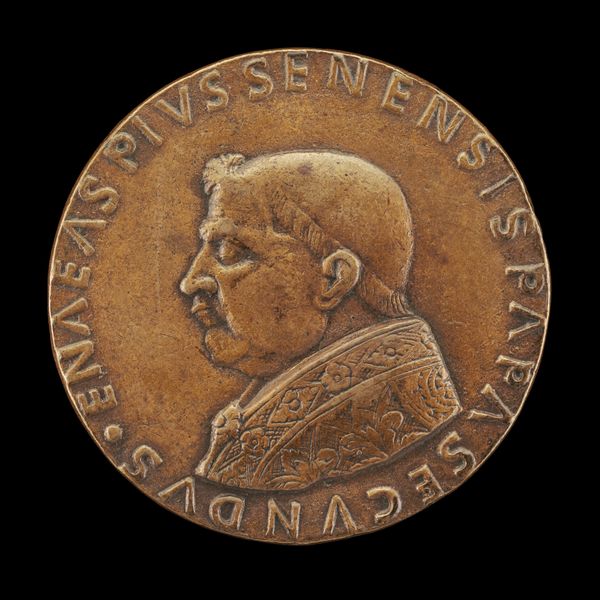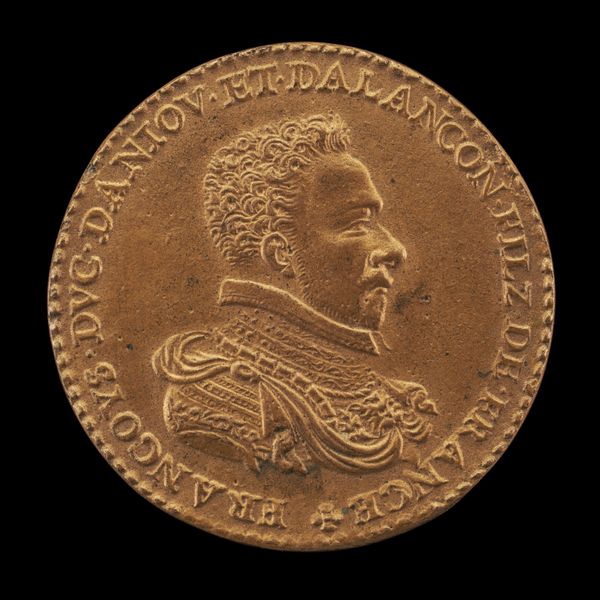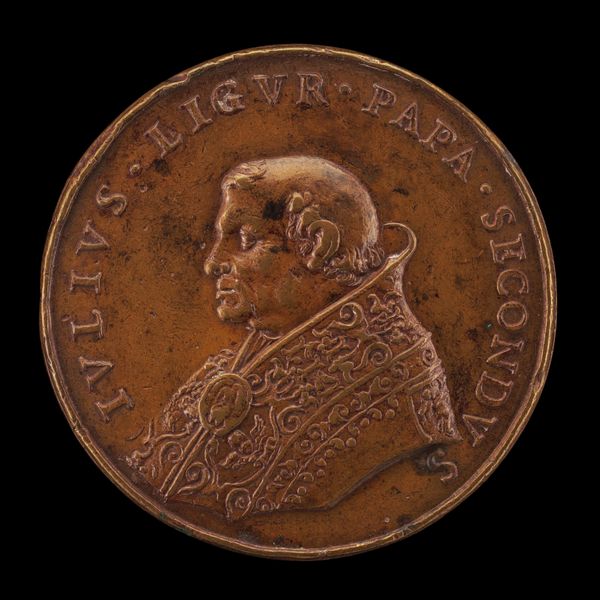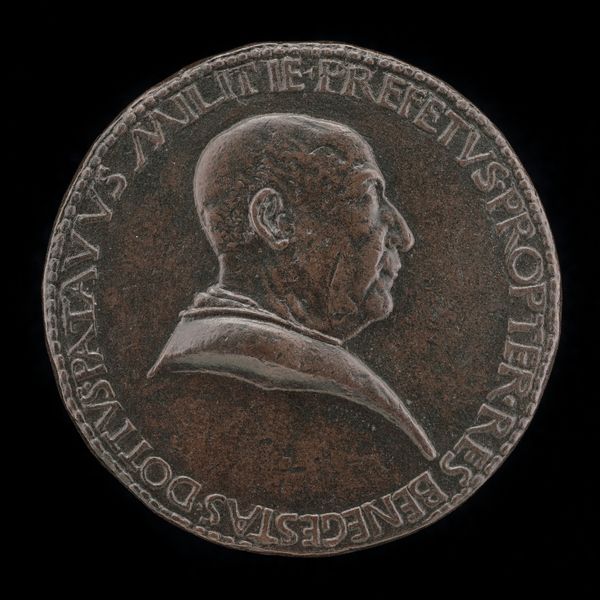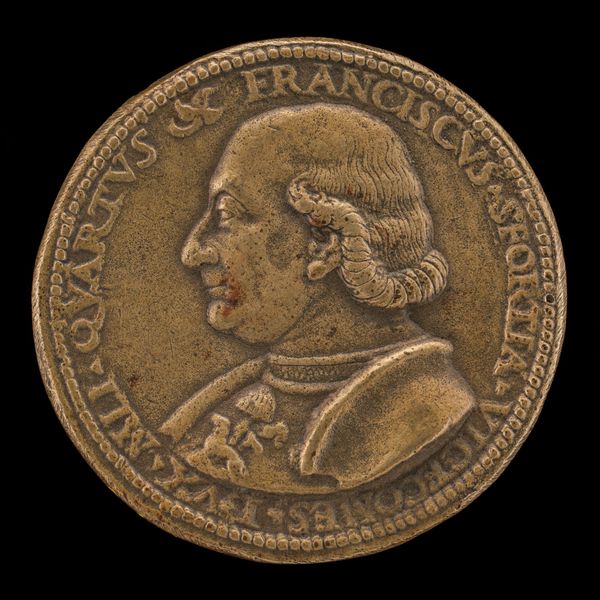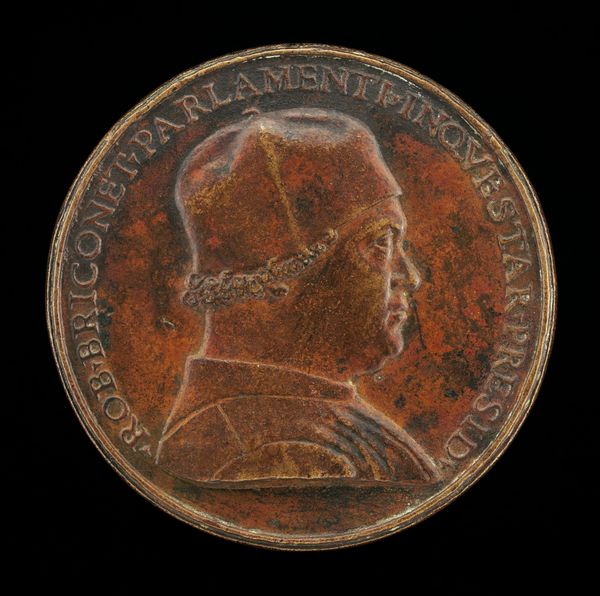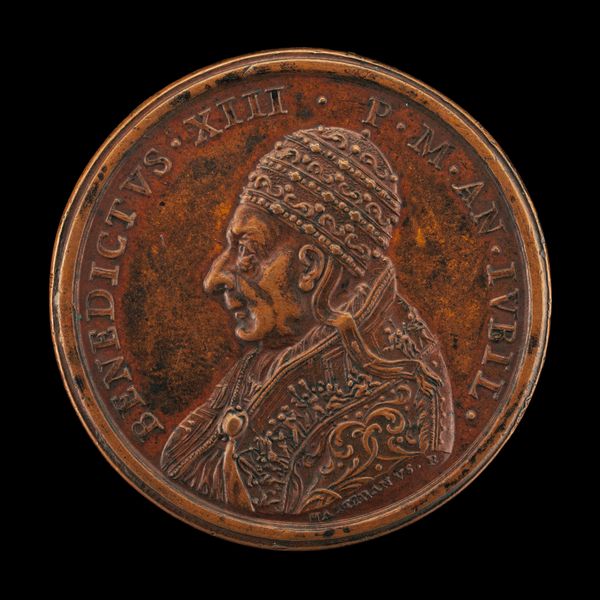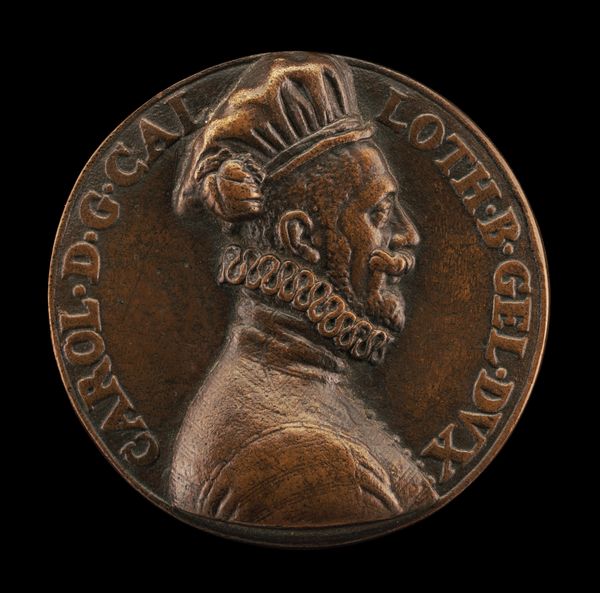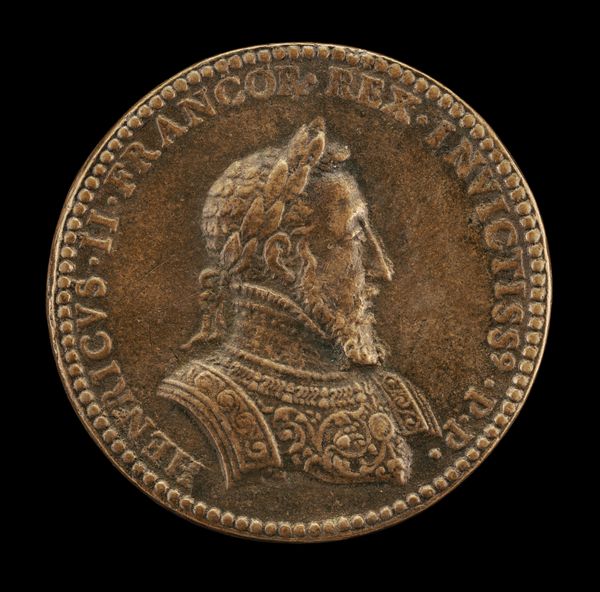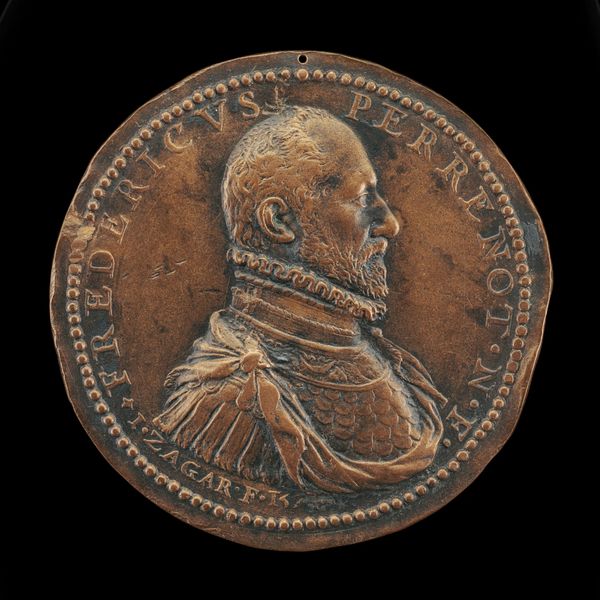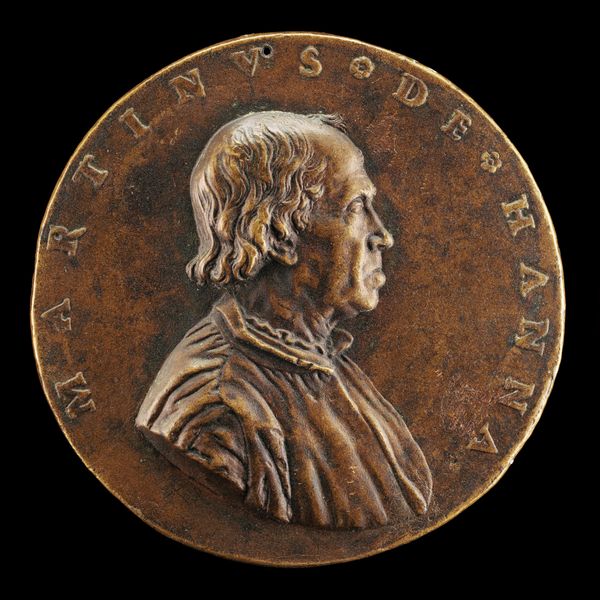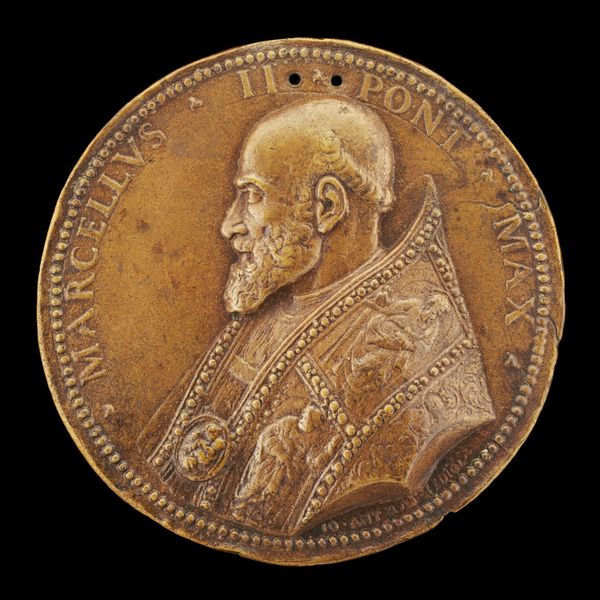![Julius II (Giuliano della Rovere, 1443-1513), Pope 1503 [obverse] by Caradosso Foppa](/_next/image?url=https%3A%2F%2Fd2w8kbdekdi1gv.cloudfront.net%2FeyJidWNrZXQiOiAiYXJ0ZXJhLWltYWdlcy1idWNrZXQiLCAia2V5IjogImFydHdvcmtzLzQxYmY5YTdiLTc4NmMtNDlmMS05YmE2LTg3YTJiNThiOGMzNC80MWJmOWE3Yi03ODZjLTQ5ZjEtOWJhNi04N2EyYjU4YjhjMzRfZnVsbC5qcGciLCAiZWRpdHMiOiB7InJlc2l6ZSI6IHsid2lkdGgiOiAxOTIwLCAiaGVpZ2h0IjogMTkyMCwgImZpdCI6ICJpbnNpZGUifX19&w=3840&q=75)
Julius II (Giuliano della Rovere, 1443-1513), Pope 1503 [obverse] 1506
0:00
0:00
carving, relief, bronze, sculpture
#
portrait
#
medal
#
carving
#
relief
#
bronze
#
11_renaissance
#
male portrait
#
sculpture
#
carved
#
italian-renaissance
Dimensions: overall (diameter): 5.64 cm (2 1/4 in.) gross weight: 55.12 gr (0.122 lb.) axis: 6:00
Copyright: National Gallery of Art: CC0 1.0
Curator: The stoicism here is palpable. What is your initial response to this portrait of Pope Julius II by Caradosso Foppa from 1506? Editor: It's imposing, certainly. The gaze is firm, unflinching. There’s an almost intimidating quality emanating from such a small object. The bronze material definitely contributes to that sense of solemn authority. Curator: This work really exemplifies the Renaissance revival of classical forms. Portrait medals like this served a specific function during the era, as a portable form of propaganda that solidified power, both political and religious. Editor: I can see that. Medals often function as talismans. What symbolic weight did papal imagery carry? Was it to associate Julius with, say, the glory of Rome, the power of Christ? Curator: Absolutely, it’s a careful construction of Julius's persona. Remember Julius was known as the "Warrior Pope." He actively participated in military campaigns, expanding the Papal States. The stern profile and high relief would consciously mirror those of Roman emperors on their coinage. These medals are not merely artworks, they are very purposefully fashioned instruments of self-promotion, shaping the narrative of his papacy. The inscriptions reinforce this, announcing him as Julius II, Pope. Editor: I wonder what he thought of it? Was he pleased with his own carefully constructed image? Did people take it at face value or did they have some understanding of the role imagery plays in fashioning power? Curator: Well, Renaissance society, particularly those in positions of power like Julius, were exceptionally savvy in how art shapes public perception. It’s not about truth, it is about crafting an image to legitimize authority and inspire awe, but you also need artists like Foppa to do it. Editor: The fact that the work survives speaks to the longevity of art's ability to shape a legacy. Though relatively small in scale, the message of strength, dominance, is loud and clear and its visual language endures. Curator: Indeed. Thinking about the social dynamics during his rule, one might even imagine how Julius deployed images strategically to navigate shifting allegiances and quell opposition. Thanks to such works, his power is still felt centuries after. Editor: And thank you for that compelling historical lens. The portrait clearly transmits symbolic intent across eras.
Comments
No comments
Be the first to comment and join the conversation on the ultimate creative platform.
